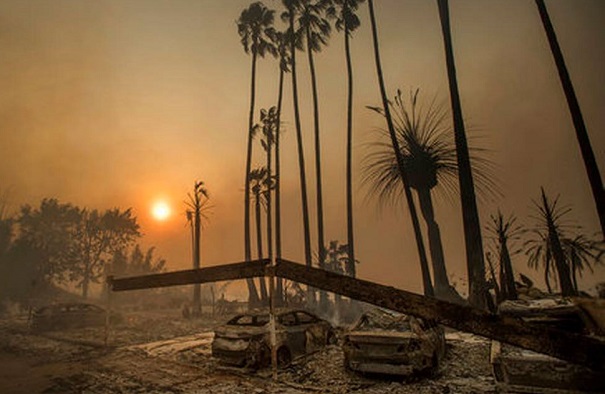We Were Warned 30 Years Ago – Now Global Warming is “in our living room”
On June 23, 1988, a sultry day in Washington, James Hansen told Congress and the world that global warming wasn’t approaching — it had already arrived. The testimony of the top NASA scientist, said Rice University historian Douglas Brinkley, was “the opening salvo of the age of climate change.”
Read the entire article at The Bradenton Herald.
Thirty years later, it’s clear that Hansen and other doomsayers were right. But the change has been so sweeping that it is easy to lose sight of effects large and small — some obvious, others less conspicuous.
Earth is noticeably hotter, the weather stormier and more extreme. Polar regions have lost billions of tons of ice; sea levels have been raised by trillions of gallons of water. Far more wildfires rage.
“The biggest change over the last 30 years, which is most of my life, is that we’re no longer thinking just about the future,” said Kathie Dello, a climate scientist at Oregon State University in Corvallis. “Climate change is here, it’s now and it’s hitting us hard from all sides.”
Warming hasn’t been just global, it’s been all too local. According to an Associated Press statistical analysis of 30 years of weather, ice, fire, ocean, biological and other data, every single one of the 344 climate divisions in the Lower 48 states — NOAA groupings of counties with similar weather — has warmed significantly, as has each of 188 cities examined.
The effects have been felt in cities from Atlantic City, New Jersey, where the yearly average temperature rose 2.9 degrees in the past 30 years, to Yakima, Washington, where the thermometer jumped a tad more. In the middle, Des Moines, Iowa, warmed by 3.3 degrees since 1988.
South central Colorado, the climate division just outside Salida, has warmed 2.3 degrees on average since 1988, among the warmest divisions in the contiguous United States.
When she was a little girl 30 years ago, winery marketing chief Jessica Shook used to cross country ski from her Salida doorstep in winter. It was that cold and there was that much snow. Now, she has to drive about 50 miles for snow that’s not on mountain tops, she said.
“T-shirt weather in January, that never used to happen when I was a child,” Shook said. When Buel Mattix bought his heating and cooling system company 15 years ago in Salida, he had maybe four air conditioning jobs a year. Now he’s got a waiting list of 10 to 15 air conditioning jobs long and may not get to all of them.
And then there’s the effect on wildfires. Veteran Salida firefighter Mike Sugaski used to think a fire of 10,000 acres was big. Now he fights fires 10 times as large. “You kind of keep saying ‘How can they get much worse?’ But they do,” said Sugaski, who was riding his mountain bike on what usually are ski trails in January this year.
With more than 70 percent of the Earth covered by oceans, a 3-inch increase means about 6,500 cubic miles (27,150 cubic km) of extra water. That’s enough to cover the entire United States with water about 9 feet deep.
It’s a fitting metaphor for climate change, say scientists: We’re in deep, and getting deeper. “Thirty years ago, we may have seen this coming as a train in the distance,” NOAA’s Arndt said. “The train is in our living room now.”


